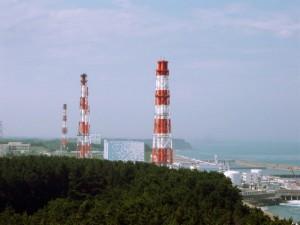
More than two years after the Fukushima Daiichi nuclear disaster, we’re still receiving unsettling updates regarding radiation leaks and subsequent cleanup efforts. The latest bit of news is no different. The Guardian reported that radiation readings near some of the storage tanks for contaminated water have increased substantially. This not only poses additional risks to cleanup crews and the environment, but some are worried this might be an indication that Japan still doesn’t have a firm grip on containing the radiation.
Japan’s nuclear regulation authority reported increased radiation readings from the soil above one group of water storage tanks. The reading of 2,200 millisieverts per hour is an increase of 20 percent, high enough to kill an unprotected human within hours, according to the Guardian. The 1,000 subterranean tanks are being used to store contaminated groundwater that has seeped into the reactor basements and come into contact with radioactive coolant. Approximately 400 tons of groundwater is flowing into these areas each day. As a possible solution, officials are conducting a feasibility study on building a mile-long impervious frozen wall beneath the plant. In theory, it would prevent the plant’s radioactive coolant water from mixing with groundwater. While this isn’t new technology, Japan has set aside nearly $400 million to cover the cost of the solution.
As if that wasn’t enough, Tepco, the plant’s operator, said that every day roughly 300 tons of contaminated groundwater is leaking into the Pacific Ocean. Despite the seeming lack of control over the situation, Prime Minister Shinzo Abe said he will pitch Tokyo to host the 2020 Olympics when “it will not be a problem at all.”
Though Tokyo is over 150 miles from the nuclear site, not everyone is convinced the threat of radiation leaks will be solved in the coming years. In a Q&A session on RT, Chris Busby from the European Committee on Radiation Risk said the contaminated water will eventually make its way down the coast to Tokyo. Furthermore, based on a recent photograph, Busby said it appears that steam is coming off the ocean surface near the plant, leading him to believe that something is fissioning outside the reactors, very close to the Pacific. He added, “This is not a local affair. This is an international affair.”
Image




